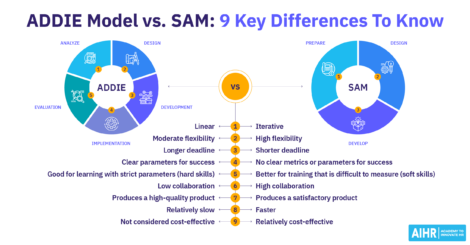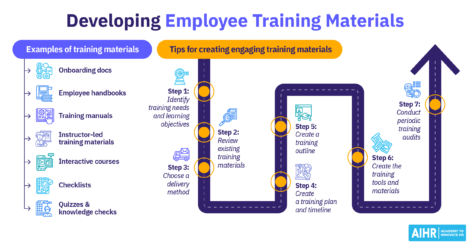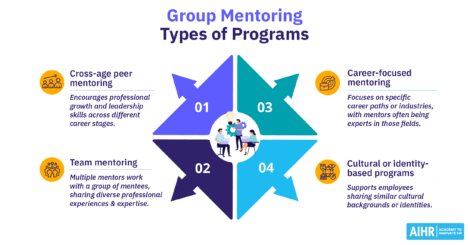The Power of Peer Mentoring in the Workplace (now and post COVID-19)

“Mentoring is a brain to pick, an ear to listen, and a push in the right direction.” This beautiful quote by John Crosby sums up some of the key benefits of peer mentoring. In this article, we’ll take a closer look at this form of mentoring for employees; its definition, benefits, and the critical elements for a successful peer mentor program.
Contents
What is peer mentoring? A definition
Coaching vs mentoring
Benefits of peer mentoring
5 Key elements of a successful peer mentor program
Wrap-up
FAQ
What is peer mentoring? A definition
Peer mentoring is an intentional one-on-one relationship between employees at the same or a similar lateral level in the organization that involves a more experienced worker teaching new knowledge and skills and providing encouragement to a less experienced worker (Eby, 1997).
The main goal of peer mentoring is two-fold. On the one hand, it’s to share job-related knowledge, this means transferring both job-relevant technical knowledge and skills. On the other hand, it’s to provide psychosocial support. We will explore the benefits of peer mentoring more later in this article!
Coaching vs mentoring
Before we continue, it’s good to make the distinction between coaching and mentoring. Or in our case, peer coaching and peer mentoring for employees.
While there can certainly be some overlap between the two, the philosophy behind them is not the same. Peer coaching is aimed at reflecting on current practices and solving problems in the workplace. It’s a confidential process through which two – or more – colleagues work together.
Peer mentoring involves a one-on-one relationship between employees at the same or similar lateral level in the organization where the more experienced employee acts as a guide or advisor for their less experienced counterpart.
Another difference lies in the fact that coaching tends to be more performance-driven while mentoring is more development-driven. For a handy overview of coaching vs mentoring and their characteristics, you can go here.
Benefits of peer mentoring
Having a peer mentor program has a lot of benefits for your organization. Among other things, it can boost your recruitment efforts, retention, and general engagement levels. We’ll take a look at some key benefits of peer mentoring below.
Employee wellbeing
Right now, but also post COVID-19, having a peer mentor can be a big boost for the wellbeing of your employees. Research shows that in the Netherlands, for instance, 70% of surveyed employees experience stress and tension due to Corona measures. 50% said they have gloomy thoughts and 10% have severe anxiety.
Buffer’s annual State of Remote Work report last year already showed that 22% of employees found it difficult to find a healthy work-life balance. 19% cited loneliness as a factor in their remote working and 17% struggled with collaboration or communication.
It wouldn’t surprise me if these figures would be significantly higher this year since much more people have been forced to work remotely over the past few months. And since working from home will remain a reality for many people even post COVID-19, simply because most companies aren’t ready to operate on a 1,5-meter distance basis yet, I believe (mental) employee wellbeing will become one of the top priorities for organizations.
The relationship between a peer mentor and their mentee is based on trust and therefore often more personal. Employees are more likely to share their actual state of mind, concerns, etc. with their mentor than, for instance, with their manager. Having a peer mentor in these challenging times can be what makes the difference between an employee that is literally unwell – or well.
Recruitment
A peer mentoring program can be a valuable asset even before people join your organization. Candidates today are looking for more than just basic compensation and benefits when they contemplate their next career move. Learning and development opportunities within a company are, therefore, increasingly important.
Peer mentoring programs are a fantastic way for people to work on both their job-related skills and knowledge as well as their interpersonal skills. As such, they can be a decisive factor in a candidate’s decision to join your organization and an element to highlight in your Employer Branding activities.
Retention
From recruitment we go to retention. A lack of opportunities to develop and grow is an often-cited reason for employees to leave for greener pastures. Hence, if you’ve got a successful peer mentor program in place, you may be able to keep people in the company.
A case study done at Sun Microsystems shows how mentoring has a positive impact on both career development and retention. The research was done by Gartner and involved data from more than 1000 Sun employees over a five-year period. Not only did they find that mentors were promoted six times more often than those not in the program, but mentees were also promoted five times more often than those not in the program.
Retention-wise, it turned out that retention rates for mentees (72%) and mentors (69%) were much higher than for employees who didn’t take part in the mentoring program (49%).
Onboarding
A peer mentor can play a big role in socializing a new hire, especially if they’re involved right from the start. This means as soon as the employee onboarding begins – and perhaps even before, during the pre-boarding period.
Tacit knowledge transfer
A lot of the taken-for-granted knowledge of our employees comes from their personal experience and their interactions with colleagues. This kind of tacit knowledge is hard to transfer. It often isn’t recorded in a database, standard operating procedure, or formal training program. Besides, even if all knowledge would be formalized, (technological) developments go so fast that, for many jobs, it would be quickly outdated.
Peer mentoring is a great – and perhaps even the only – way to ensure the transfer of tacit knowledge.
Engagement
Unsurprisingly, peer mentoring has a positive effect on employee engagement; that kind of is the logical sum of all the above-mentioned benefits. Not only does having a strong peer mentor program improve job satisfaction, retention, and the (personal) development of the mentee, it also positively affects the peer mentor.
5 Key elements of a successful peer mentor program
Let’s say you want to get started with peer mentoring in your organization. Where do you begin? How do you get the ball rolling? Here are five key elements to keep in mind.
1. Define your objectives & strategy
As with every new initiative, you need to know what the objectives of your peer mentoring program are. This can vary widely from one organization to another and will largely depend on the main issues within the company. The structure of your program will depend on these business problems and on the organizational strategy.
Are you experiencing high turnover among young managers for instance? Or a sub-par performance of junior-level employees in a certain segment? Or is improving the retention of female salespeople your main goal?
Once you know the business problem you’re trying to solve, peer mentoring can be (part of) the solution. You’ll also be able to measure the success of your peer mentor program then. For instance, if you want to improve the retention of female salespeople, you could look at before-and-after retention rates.
2. Start small
And keep things simple. There’s no need for highly elaborate mentoring programs because, at the end of the day, the best mentoring happens in pairs. This brings us to one of the most important parts mentoring namely the matching of mentors and mentees.
There are various ways to do this ranging from algorithms that match people to simply pulling a piece of paper with a name on it out of a hat. Usually, though, peer mentoring programs that give participants some say in the matching process are the most successful.
You can gather people’s input via a simple questionnaire, asking them what they hope to offer or get out of the peer mentoring. Or, if you’d like to keep things even simpler, you can give both mentors and mentees several counterpart options to choose from.
What’s important to keep in mind here, is that if for whatever reason a ‘couple’ doesn’t fit, you’ve provided them with an easy exit. This means that participants know that they can get out of the mentoring relationship without any hard feelings from their other half. How? For example by asking them for feedback as soon as they’ve had their first peer mentoring session.
3. Set ground rules
Once you’ve determined your goals and coupled up your mentors and mentees, it’s time to set some ground rules. Nothing too complicated, just a few guidelines – or checklist if you like – for people in case they don’t know where to start. Think for instance of:
- The format – Suggest a frequency for the mentoring meetings, a length, give them a list of potential questions/topics they can discuss, etc. Anything that can help the pairs to get started.
- Expectations – Some people might expect wonders from their mentors. And while certain mentors can definitely work wonders, it’s good to manage expectations beforehand. Be clear about the goals of the peer mentoring program and don’t forget to mention what people should not expect.
4. Assess
The goals you’ve set for your peer mentor program enable you to measure its success. Going back to our example of improving the retention of female salespeople once again, one way to measure the success of your program is by looking at before and after retention rates.
Another key factor of your assessment process is the feedback of your participants – the mentors and mentees. How did they experience the program? If you wanted to increase engagement, then how engaged are people now and before they started with peer mentoring?
Apart from measuring how successful the peer mentor program is in terms of achieving its objective, the feedback you gather from your employees is also essential for improving the program itself. What could you do better next time? How did they feel about the matching process? Would they recommend peer mentoring to their colleagues?
5. Buy-in and mindset
As with most company-wide initiatives, it’s important to get leadership on board. Not just because they can be great advocates of your organization’s peer mentoring program, but also because they can be great peer mentors themselves! Managers, department heads, and other organizational leaders tend to have more (specific) experience and know-how which makes them ideal candidates for peer mentoring.
Another important ingredient for a successful peer mentoring program is people’s mindset. This means that everyone in the organization needs to have this ‘eager to learn’ mentality. They should see peer mentoring as an opportunity to develop and improve themselves. When it comes to learning and development we call this having a growth mindset (as opposed to a fixed mindset). This is something you can already look for in the candidates you’re hiring.
Wrap-up
Peer mentoring can be a great way to, on the one hand, transfer job-related knowledge and experience between employees and, on the other, to provide psychosocial support. On top of that, having and being a peer mentor can do a lot of good for employee wellbeing – especially given the current challenges of remote work.
If you have experience setting up – or being a part of – a peer mentoring program please share your story with us in the comments – we’re curious to hear about your insights!
FAQ
Peer mentoring is an intentional one-on-one relationship between employees at the same or a similar lateral level in the organization that involves a more experienced worker teaching new knowledge and skills and providing encouragement to a less experienced worker.
A peer mentor usually is someone at the same or similar lateral level in the organization as the mentee but with more experience and he or she acts as a guide or advisor for their less experienced counterpart.
Peer mentoring can have a positive impact on, among other things, an organization’s recruitment, retention, employee wellbeing, tacit knowledge transfer and engagement.
Weekly update
Stay up-to-date with the latest news, trends, and resources in HR
Learn more
Related articles
Are you ready for the future of HR?
Learn modern and relevant HR skills, online












